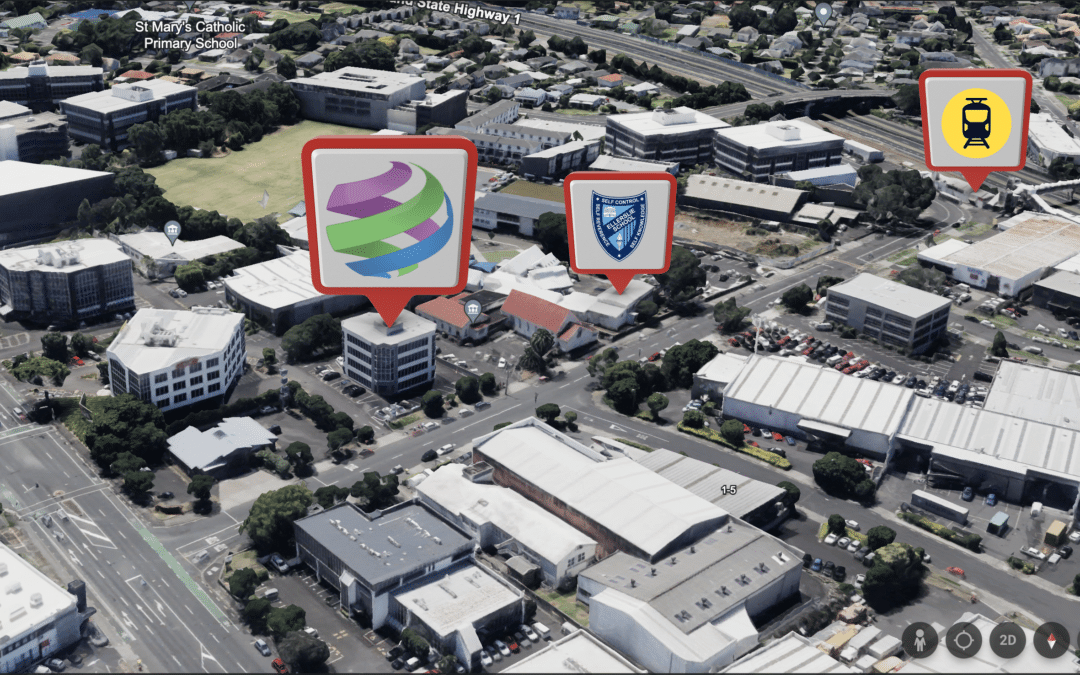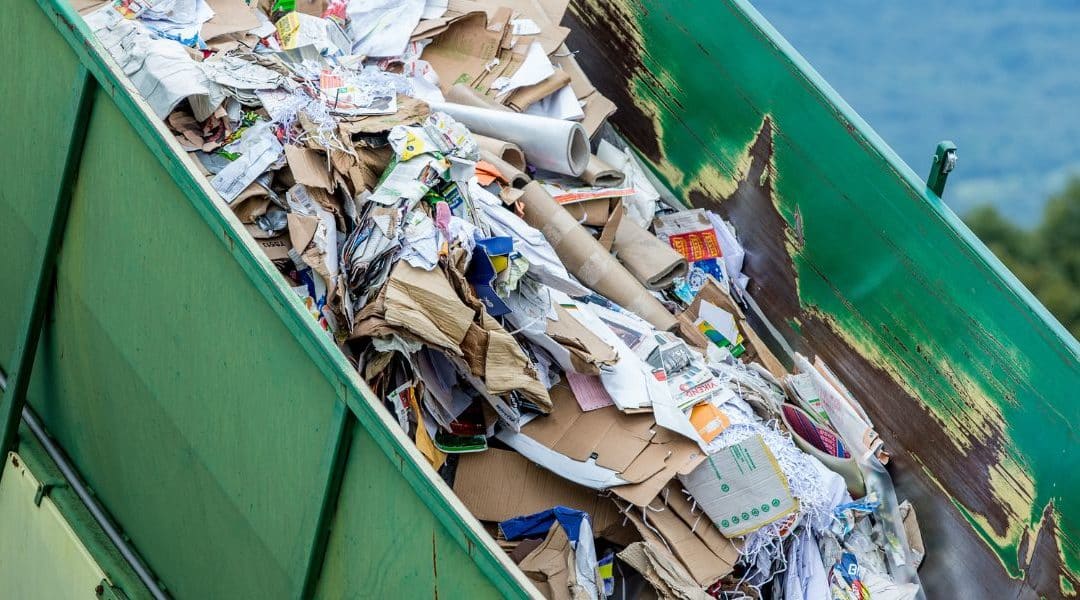
by Chris Hargreaves | Apr 23, 2024 | Carbon Sustainability, Case Studies, Energy
Discover how Total Utilities’ innovative ‘Utility Insights’ service sparked remarkable transformations in four unique settings. From schools to industrial plants, food manufacturers to national retail chains, witness the journey of overcoming challenges and achieving success through proactive utility management.
High School Aces Utility Management Test with Total Utilities
Challenge:
A local high school’s rising utility costs were putting a strain on their budget. Additionally, waste handling expenses were escalating, further exacerbating financial pressures.
Solution:
Total Utilities stepped in with their Utility Insights service, offering a comprehensive solution to address the school’s utility management challenges. By collaborating closely with the school, Total Utilities provided proactive budgeting advice and identified opportunities for cost savings.
Result:
Through Total Utilities’ proactive approach, the high school achieved remarkable success, saving $40,000 annually (20%) in waste handling costs, offsetting rising expenses. Additionally, Total Utilities’ budgeting advice enabled planning for electricity and gas contract renewals, optimising budget and ensuring sustainability.
Overall, Total Utilities’ Utility Insights empowered the high school to overcome challenges, achieve savings, and pave the way for continued success.
Industrial Plant’s $70k Savings Story
 Challenge:
Challenge:
Utility Insights reporting on electricity cost and consumption for this industrial client revealed an alarming discovery: over $70k of reactive charges per year were being incurred. These penalty charges resulted in a significant financial burden for the plant.
Solution:
Total Utilities stepped in to address the challenge. By implementing power factor correction equipment to improve electrical efficiency, we provided a proactive solution to mitigate the reactive charges. Additionally, our system ensured that if power factor charges were incurred again, the correction equipment could be serviced promptly, avoiding any unnecessary costs.
Result:
Through Total Utilities’ intervention, the industrial plant saw remarkable results. The installation of power factor correction equipment led to a substantial reduction in reactive charges, saving the plant over $70k per year. The plant can now effectively manage power factor charges and prevent any future financial losses, ensuring long-term cost savings and operational efficiency.
Total Utilities’ Data Dive for Food Manufacturer Improves Efficiency, Cuts Costs
Challenge:
A food manufacturing plant faced the challenge of understanding and optimising energy consumption across its processing plants. Without detailed production data, it was challenging to benchmark electricity and gas usage efficiency accurately.
Solution:
Total Utilities implemented a solution by adding production data tracking at each processing plant. This provided deeper analytics for benchmarking energy consumption efficiency. By integrating production data with utility usage, our system enabled the customer to clearly visualise how energy was used in relation to production outputs.
Result:
With Total Utilities’ solution in place, the Food Manufacturing Plant achieved remarkable results. The addition of production data allowed for the creation of Key Performance Indicators (KPIs) at each plant, enabling better tracking and management of energy usage.
Furthermore, cross-site benchmarking within each business unit became possible, facilitating insights and improvements across the organisation. Through Total Utilities’ innovative approach, our client optimised energy efficiency, reduced costs, and paved the way for continued success in sustainable manufacturing.
Revolutionising Retail Efficiency for National Retail Chain
 Challenge:
Challenge:
A national retail chain client with 45 locations across New Zealand faced the challenge of managing out-of-hours energy consumption effectively. Ten stores were identified as having significant energy usage outside of operating hours, resulting in excessive costs exceeding $140,000 per year.
Solution:
Total Utilities implemented a solution by resetting Heating, Ventilation, and Air Conditioning (HVAC) controls to ensure energy usage aligned with operating hours. This proactive approach aimed to optimise energy consumption and reduce unnecessary costs associated with out-of-hours usage.
Result:
With Total Utilities’ intervention, our client achieved significant savings and efficiency improvements. By resetting HVAC controls, energy consumption during non-operational hours was minimised, leading to substantial cost reductions. This strategic approach not only helped the chain save money but also contributed to its sustainability efforts by reducing unnecessary energy waste.

by Chris Hargreaves | Mar 15, 2024 | Carbon Sustainability, News
Total Utilities is thrilled to announce a significant milestone in our journey: we’ve moved to a bigger and better office location in Ellerslie, Auckland.
Our team’s fantastic growth and expanding operations have necessitated a change in scenery, and we’re excited to share the details of our office relocation with you.
A space fit for growth & sustainability
Our new office, located at Level 2, 2 Kalmia Street, Ellerslie, has been carefully chosen to accommodate our growing team and support our commitment to sustainability.
With enhanced public transport options and a central location, it’s the perfect space for us to continue delivering exceptional service to our clients while fostering closer connections within the community.
We’re eager to settle into our new space and welcome clients and partners for visits and meetings.
Company Director, Chris Hargreaves says, “I’m pleased to report the move went very smoothly – lots of work done by many hands. It was a real team effort and everyone pitched in.”
Life changing benefits
He explains he was delighted with the immediate benefits of the move: “On my first day at the new office, I passed the motorway onramp and the sign said it would take 65 minutes to Mount Wellington, where our old office was based. I got on the train and it took me 32 minutes to get to Ellerslie. Not only that, but I sent around six emails and relaxed on my commute. Life changing!”
Chris also estimates that taking the train to the new office instead of driving to the old office results in a reduction of 1,510kg of C02e per year, which is a hugely impressive 62% reduction in commuting emissions. Savings will increase further—to nearly 2,000kg of C02e—when the Pukekohe to Papakura line is electrified later this year.
Jonathan Stewart, Total Utilities’ Data Wrangler, also achieves significant savings of around 1,900kg of C02e per year by catching a bus and a train from the North Shore, instead of driving. Across the whole team, the carbon savings are likely to be substantial.
Exciting times
Chris adds, “As we move into our new office, we want to extend a sincere thank you to all our customers for your ongoing support which has played a massive role in our success. We’re excited to keep moving forward together as we settle into our new space.




by Chris Hargreaves | Mar 14, 2024 | Carbon Sustainability, Energy, News
Prepare for a ride into the amazing world of energy trivia with our top 10 list of mind-boggling facts and trivia. From phantom energy to compressed air energy storage – take a glimpse into the fascinating forces that power our world:
- Phantom energy – the sneaky culprit: Did you know that even when your business devices are turned off, they might still be sipping on energy? This phenomenon, known as ‘phantom’ or ‘vampire’ energy usage, contributes to about 10% of residential electricity consumption. For businesses, this translates into substantial hidden costs. Unplug and save to maximise your energy efficiency and reduce operational expenses. Why not take a look at our case study featuring a well-known NZ retail chain client who achieved significant cost and carbon savings with our help through intelligent energy insights.
- The sun’s incredible power hour: Imagine this: in just an hour and a half, the amount of sunlight that reaches the Earth’s surface could meet global energy demand for an entire year. Solar energy holds untapped potential that could revolutionise your business’s energy landscape. Just last month, the first grid-scale solar farm operated by Lodestone Energy opened in Kaitaia with an output large enough to power over 6,000 homes.
- Renewable reign – a 2020 triumph: A remarkable shift occurred in 2020 when renewable energy sources claimed over 80% of the new electricity capacity added worldwide, surpassing the once-dominant fossil fuels. The dawn of a sustainable era is upon us, enabling business owners to align with eco-friendly practices.
- Hydroelectric prowess – Nature’s efficiency: Hydroelectric power plants are true champions in efficiency, converting approximately 90% of the energy from falling water into electricity. In a typical year, 65% of NZ’s energy is produced from hydroelectric power.
- Golmud Solar Park – packing a solar punch: China’s Golmud Solar Park reigns as the world’s largest solar farm as of 2024, boasting 2.8 GW of solar capacity. With nearly seven million panels soaking up the sun, it’s a powerhouse of clean energy.
- LEDs lighting the way: Embrace the brilliance of LED light bulbs, champions of energy efficiency. These marvels use up to 80% less energy than traditional incandescent bulbs and can last an astonishing 25 times longer, illuminating the path to sustainability and cost savings for your business.
- Solar cell evolution – from 6% to 20% plus efficiency: Journey back to 1954 when Bell Labs developed the first practical solar cell with an efficiency of around 6%. Fast forward to today, where cutting-edge solar cells exceed 20% efficiency, transforming sunlight into a potent energy source for businesses looking to harness the power of the sun.
- Compressed air’s elastic energy storage: Enter the realm of compressed air energy storage (CAES) systems, where excess energy is used to compress air stored in vast underground caverns. When electricity demand arises, the released compressed air generates power, showcasing the elasticity of energy storage.
- Geothermal genesis in Italy: Italy proudly hosts the world’s first geothermal power plant, built in Larderello in 1904. Geothermal energy taps into the Earth’s internal heat to generate electricity, providing a sustainable alternative.
- Energy star’s bright certification: Discover the efficiency of energy star-certified appliances, wielding the power of up to 50% more energy efficiency compared to their non-certified counterparts. For businesses, this certification signifies a commitment to energy-conscious choices and operational savings.
Want to learn more about increasing sustainability, reducing costs, and improving efficiency? Get in touch with our experts at Total Utilities today.

by Chris Hargreaves | Mar 14, 2024 | Carbon Sustainability, News, Waste
Are you ready to take your business to the next level of sustainability and efficiency? Take a look at our game-changing waste reduction service, detailed in our brand new ‘Waste Reduction’ brochure.
Designed with your success in mind, our waste management service is here to help you transform the way you approach waste and sustainability while optimising your costs.
Experience Integrated Waste Reporting
Say goodbye to generic waste reporting and embrace a tailored approach with Total Utilities’ Integrated Waste Reporting. Our cutting-edge tools seamlessly integrate waste metrics with your electricity, natural gas, and LPG data through the Utility Insights platform.
This means you get a comprehensive overview of your utility consumption and spend, enabling you to make informed decisions that drive efficiency for your unique business needs.
We understand that true efficiency involves more than just numbers. Total Utilities offers hands-on waste solutions, starting with comprehensive waste audits that analyse your site and waste output.
But that’s not all – we also provide tailored waste education to foster better recycling habits within your organisation. By involving senior management, we ensure everyone is on board with sustainable waste management practices.
Strategic Solutions
At Total Utilities, we take a strategic approach to meet your waste management needs. Our waste review and waste procurement services involve detailed analysis of your current services.
Through expertly managed RFP bid processes, we secure competitive proposals tailored to your business’s unique requirements. Our solutions not only meet immediate needs but also propel sustainable practices for your future success.
Your Success is Our Priority
Optimising cost savings, meeting environmental standards, demonstrating Corporate Social Responsibility (CSR), maximising recycling, mitigating risks, engaging your employees in an eco-friendly workplace – these are the key drivers that set Total Utilities apart.
We are committed to driving transparent reporting and enabling accurate carbon reporting, ensuring your business stands out as a leader in sustainability.
Real-World Success Stories
Discover real-world benefits through inspiring success stories featured in our brochure. From saving $105,000 annually for a leading hotel group to slashing costs by $27,842 for a prominent NZ bakery, Total Utilities consistently delivers remarkable results.
Our strategic waste management solutions not only drive financial savings but also contribute to a greener, more sustainable future.
Partner with Total Utilities
Ready to unlock the full potential of your waste reduction journey? Total Utilities invites your business to join us in revolutionising your waste management strategy.
Explore our new waste brochure or contact us to see how our transformative waste management solutions can help reshape your approach to sustainability.

by Chris Hargreaves | Feb 16, 2024 | Carbon Sustainability, News
In the fast-paced world of business, every dollar counts. At Total Utilities, we’ve got your back, ensuring you not only save money but also make your business more eco-friendly. Our services aren’t just about being green; they’re about boosting your efficiency and profits.
Smart carbon management:
Let’s make managing carbon a breeze. Our Carbon Inventories Emissions Checklist, paired with our Carbon Insights platform powered by Net0, makes measuring and reducing emissions easy. By teaming up Net0’s advanced tech with our know-how, we offer a quick and efficient solution that trims costs and boosts efficiency.
Low carbon solutions:
Supercharge your business with our game-changing low-carbon solutions. From tailor-made solar power systems to energy-efficient technologies, we help you save money and position your business as a sustainability champion.
Waste makeover:
Revolutionise how you deal with waste with our Integrated Waste Management services. We don’t just cut costs; we enhance your sustainability game. Let’s reduce waste disposal expenses, implement smart recycling, and turn waste management into a money-saving opportunity.
Cleaning magic:
Cleanliness meets cost-effectiveness with our commercial cleaning procurement. We secure you the best deals without compromising on quality. Sustainability is a top priority – we pick providers that match your needs and eco-goals.
Utility wizardry:
Tackling utility bills is our expertise. We dive into the complex utility market, securing you cost-effective and green energy solutions. Our detailed analysis ensures not just savings but significant cost reductions.
Insider insights:
Knowledge is power. Our utility reporting and insights service empowers you to make smart decisions and find more savings. Whether it’s Utility Insights, Carbon Insights, or Energy Insights, we give you real-time data, smart tips, and cost-saving measures.
Efficiency hacks:
Streamlining your operations is what we do best. Through audits for waste, lighting, heating, and more, we find ways to cut costs and make your business more efficient.
Join us on this journey:
At Total Utilities, every dollar saved isn’t just a win for your wallet; it’s an investment in your business’s growth. Let’s make your bottom line flourish as we guide your business towards a greener and more prosperous future.

by Chris Hargreaves | Feb 16, 2024 | Company News, News
[New Zealand, 19 Feb 2024] – Total Utilities, a leading force in New Zealand sustainable solutions, urges businesses to take immediate steps towards reducing their carbon footprint as global warming breaches the 1.5°C threshold for an entire year, signalling a crucial moment for carbon action.
According to the EU’s Copernicus Climate Change Service, it’s the first time global warming has exceeded 1.5°C across an entire year from February 2023 to January 2024.
World leaders promised in 2015 to try to limit the long-term temperature rise to 1.5°C, which is seen as crucial to help avoid the most damaging impacts.
Jonathan Gardiner, Managing Director of Total Utilities, highlights that businesses can consider this warning as a timely reminder of the importance of addressing their carbon footprint.
“Ignoring your business’s emissions poses real risks not only to the environment, but also to your business in terms of non-compliance with regulations, loss of market trust and reputational damage, reduced competitiveness, and missed opportunities for efficiencies and cost savings,” he explains.
Gardiner notes that businesses often neglect carbon management for a number of reasons including cost constraints, perceived complexity, time limitations, or a lack of reliable tools and expertise. However, addressing emissions is now a strategic necessity.
“Understanding specific emission sources within industries is crucial for developing effective reduction strategies tailored to the unique challenges and opportunities present in the New Zealand business context,” he says.
Total Utilities’ simplified approach
Total Utilities’ carbon management service has been designed with simplicity and speed in mind. The approach incorporates a comprehensive Carbon Inventories Emissions Checklist, which lays out all essential steps for identifying emission sources, gathering and analysing data, calculating emissions, and reporting findings.
This is paired with Total Utilities’ cutting-edge Carbon Insights platform utilising Net0 software to measure, monitor, reduce, and report on carbon emissions effortlessly.
Harnessing the power of Net0’s carbon management platform combined with Total Utilities’ unparalleled expertise in carbon and utility management – the company delivers a revolutionary fast-track carbon management solution.
Bold choices for a greener future
Gardiner reinforces Total Utilities’ commitment to simple, sustainable solutions, stating, “At the heart of our response lies a commitment to providing effortless solutions for businesses. Using our Carbon Insights and Carbon Inventories services, businesses can seamlessly align their supply chain with sustainability goals and actively contribute to a low carbon future.”
“And here’s the thing – we get it. We don’t want the whole carbon measuring thing to slow businesses down. Our approach is all about making it easy for businesses to jump on board without complication or unnecessary fuss.”
“As the world deals with the impacts of climate change, we’re urging businesses to make bold choices. Every step towards cutting carbon is a move toward a greener, more sustainable future.”
To learn more about Total Utilities’ range of carbon reporting, measurement, and reduction tools and services, please visit www.totalutilities.co.nz.
About Total Utilities: Total Utilities is a leading provider of utility management, carbon measurement, and reduction services, offering innovative solutions to help businesses optimise their utility usage, reduce their carbon footprint, and achieve sustainability goals. With a customer-centric approach and a comprehensive range of services, Total Utilities empowers clients to navigate the complexities of carbon management and drive positive change.
About Net0: Net0 is an innovative carbon management platform that enables businesses to measure, reduce, and disclose their carbon emissions with ease. With advanced AI technology and a user-friendly interface, Net0 simplifies carbon tracking and reporting, empowering businesses to accelerate their journey towards a net-zero future.
Media contact:
Jonathan Gardiner,
Managing Director, Total Utilities
E: [email protected]
M: +64 21 265 8379

 Challenge:
Challenge: Challenge:
Challenge:







